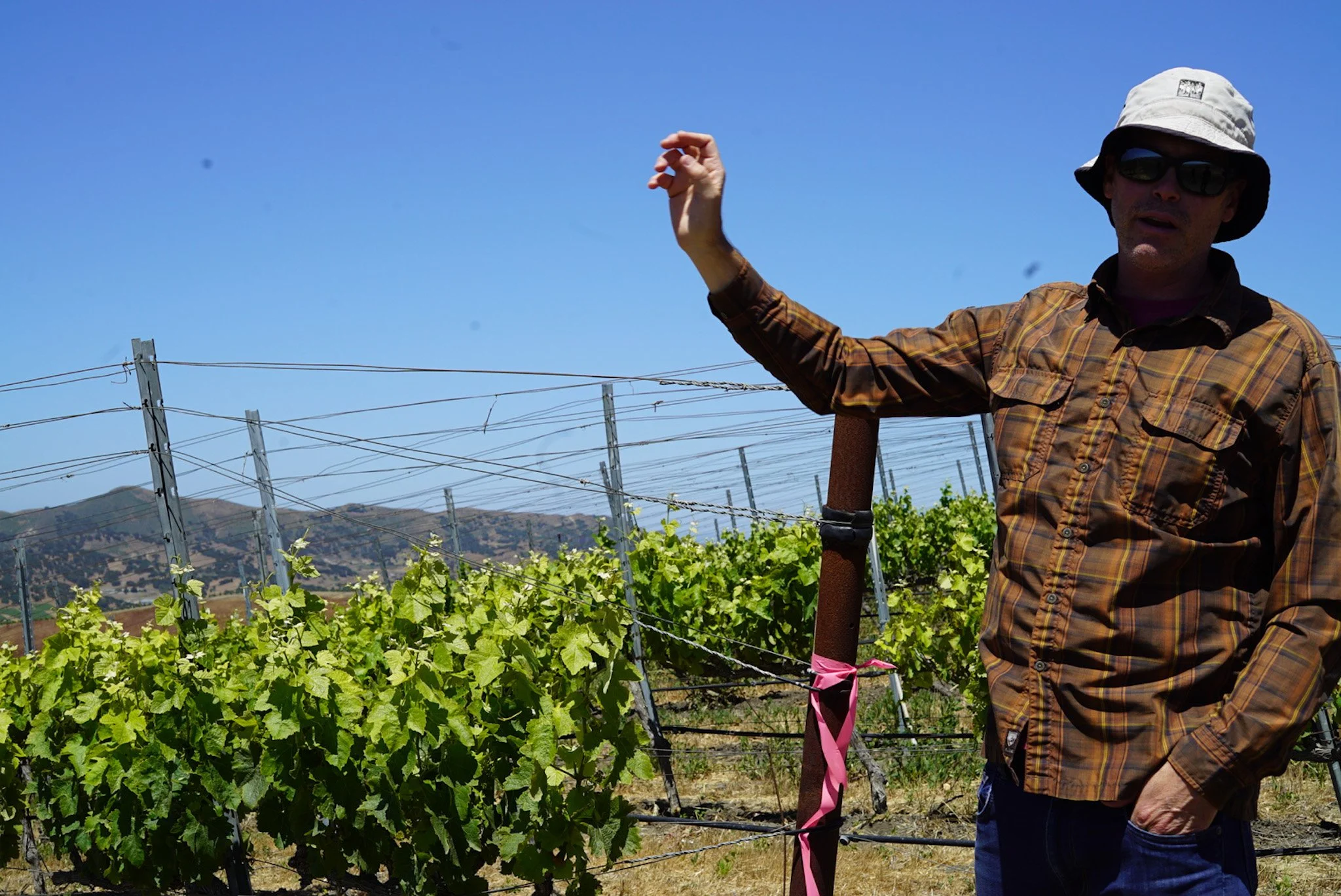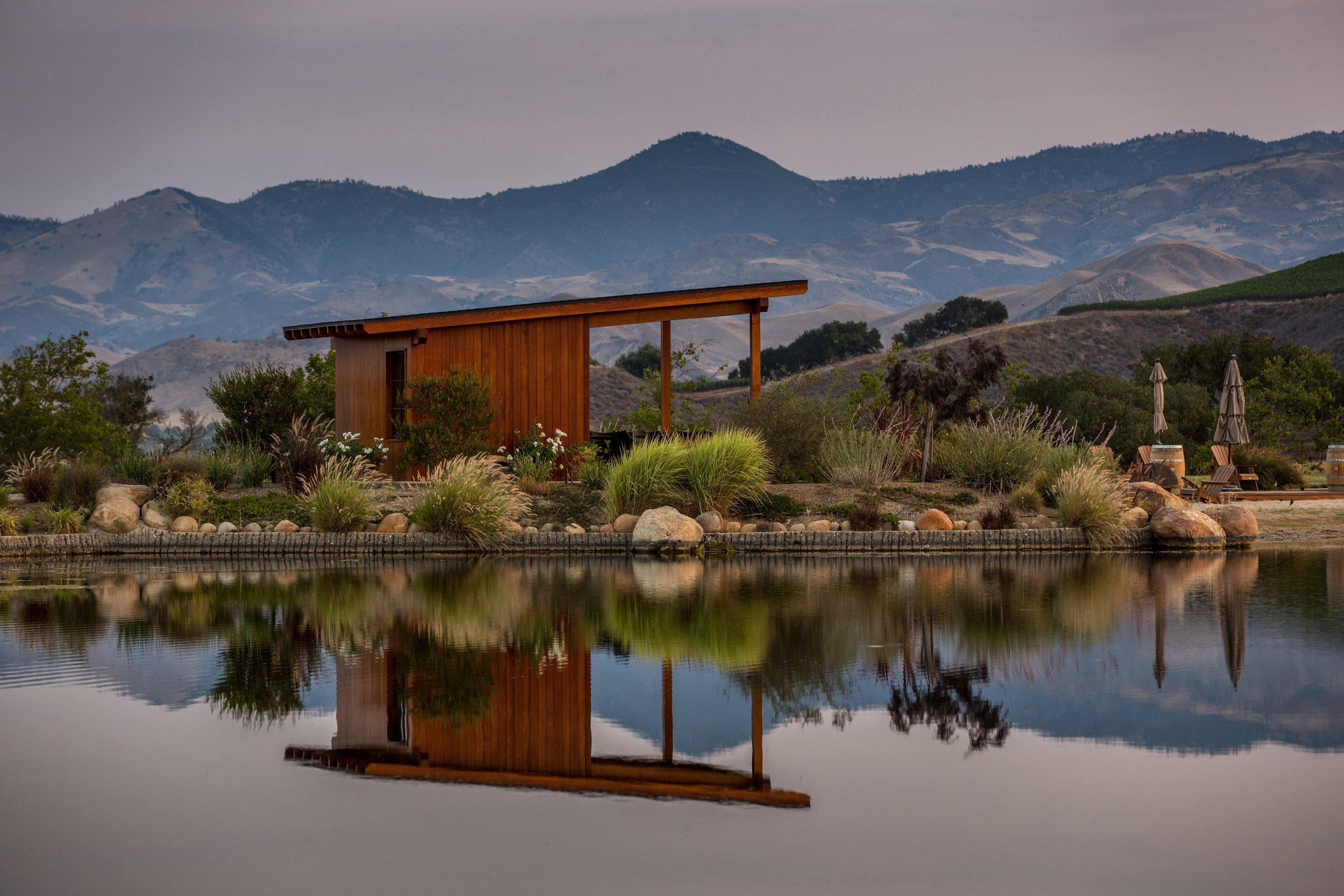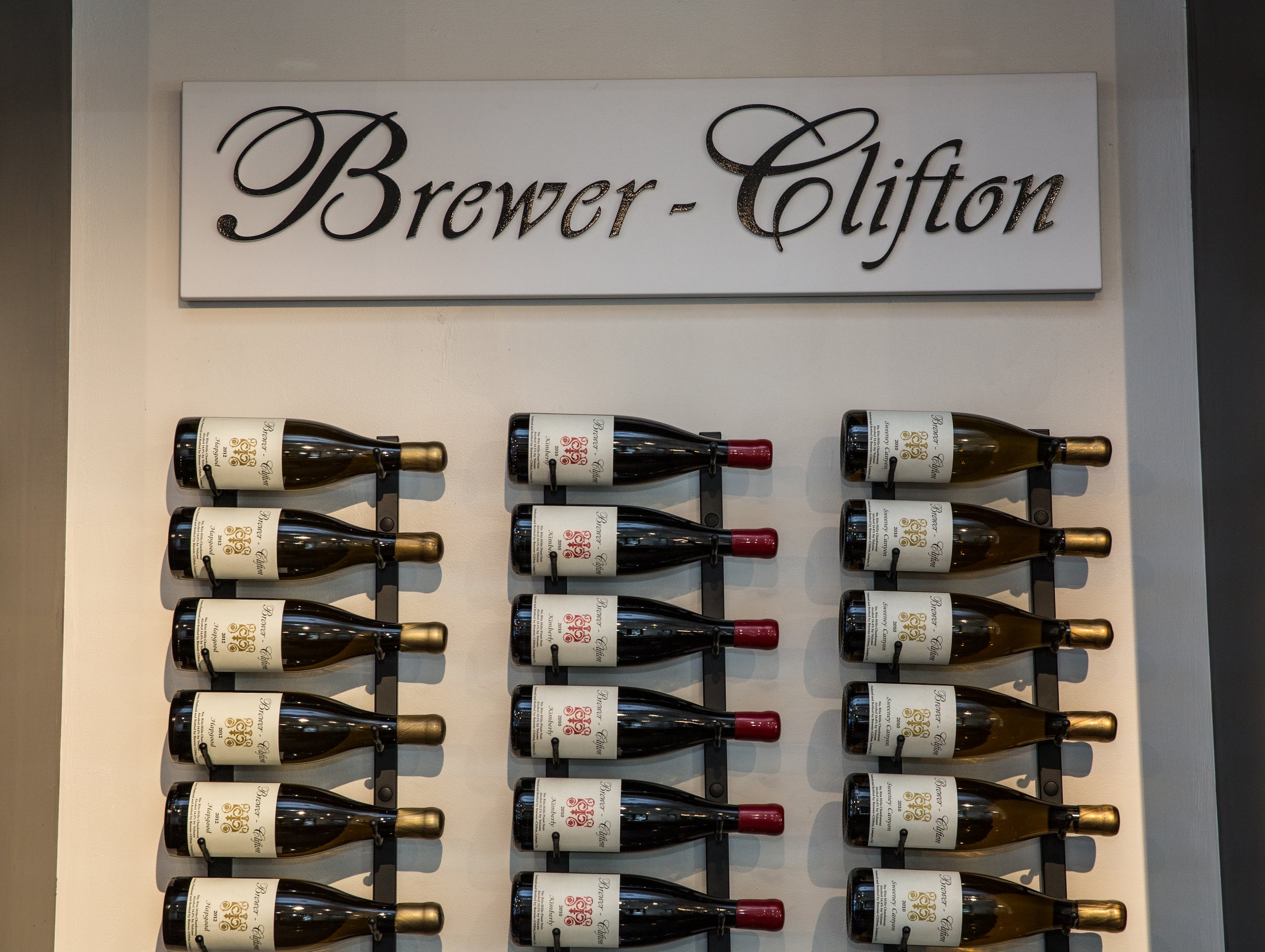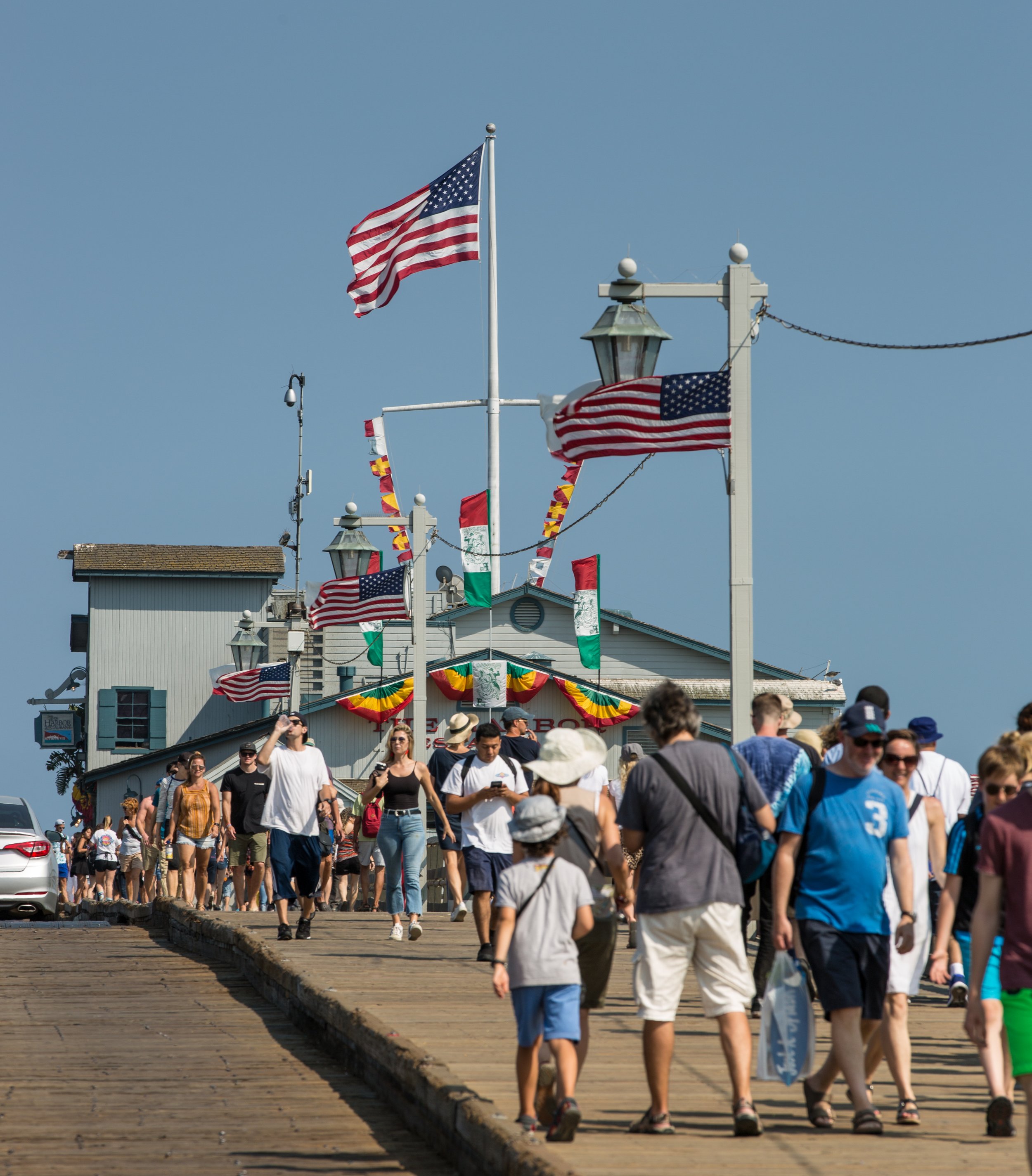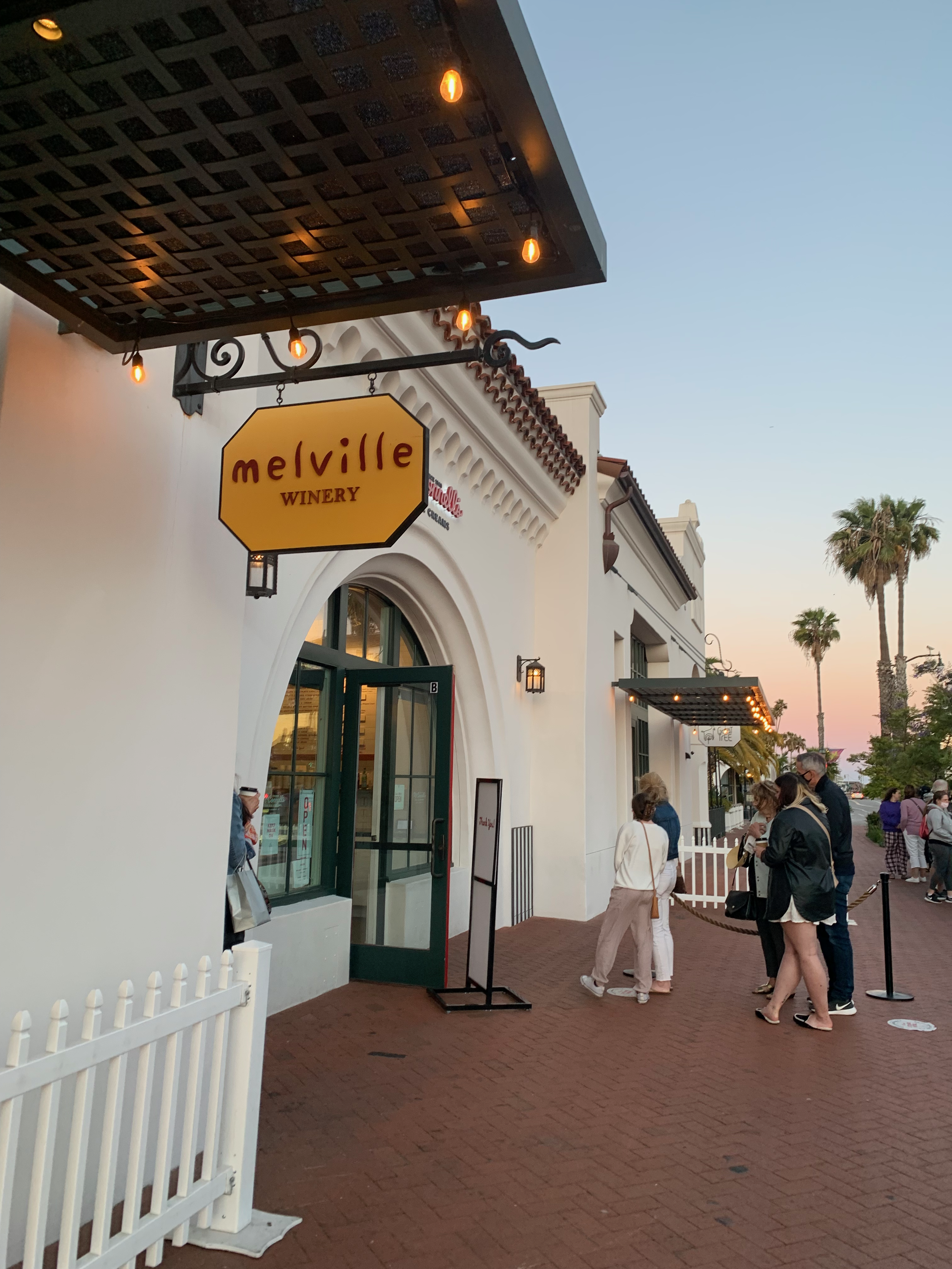I’M NOT DRINKING ANY F’ING MERLOT
Pinot Noir. Sideways. Raj Parr. The goddamn wind. Those are the the four things most likely to come up in the first few minutes of any conversation in which Santa Barbara is mentioned. Incidentally they’re also the primary cause for Santa Barbara’s meteoric rise to stardom in the wine world and — real talk — the real reason any of us started to give a shit.
The fact is, Santa Barbara’s shift in popularity is probably one of the most important things to happen in the wine world over the last two decades. And while the magic existed there for years, it’s only in the last few we’ve seen the wines enter major markets across the US. In fact, it was less than 10 years ago when both Liquid Farm and Domaine de la Cote hit the scene in NYC. A baby-somm at the time, I knew little about the region, but I did know one thing: these wines were WILDLY different from every other California Chardonnay and Pinot I had tasted. Beloved sommelier Raj Parr had leveraged the terroir and wind of Santa Barbara to create his own astoundingly beautiful wines, and in doing so helped to shine a spotlight on a region most of us were ignoring. And consumers were just as curious. Because while the 2004 release of “Sideways” did single-handedly devastate California Merlot sales with the now eponymous line, it also conversely popularized Pinot Noir and the Santa Barbara wine-growing region that provided the backdrop to the film.
I love Santa Barbara as a region to visit and appreciate all that it has to offer. Unlike the more concentrated wine mecca’s of California like Napa Valley and even Paso Robles, the region is quite large, spread out, and diverse. As you’ll see below in the “Visiting Santa Barbara” section, the downtown area of Santa Barbara along the coast is quite far (about 45min-1hr drive) from the vineyards and wineries located to the north. I enjoyed the best of both world’s and opted to stay downtown where the majority of the restaurants, hotels, and nightlife were located and drive out to the vineyards during the day. Of course, that’s not to say there isn’t plenty to do if you just chose 1, but as a first-timer, I think I’d choose to do both again.
Below is a breakdown of the region from my point of view, featuring some insight from well-traveled friends and regional organizations who lent me a few photos and suggestions. I hope you find it helpful!
The wines of santa barbara: REFRIGERATED SUNLIGHT
The real star of the show here is Pinot Noir and Chardonnay which are nothing short of exquisite, and very much their own thing. It’s tempting to compare them to Burgundy for all the savory and umami goodness oozing from both varieties, but it would be inaccurate to do so. Allow me to set the scene.
🇫🇷Burgundy:
Early morning, the rain is soft but constant. You’re standing along the bluffs of an angry ocean, with the vineyards of Chablis in your purview, cracking oysters and enjoying the fleeting sweetness of their meaty flesh while trying not to stab yourself with the shucking knife. There’s an intensity to the moment and even though it’s a little uncomfortable, you kind of like the way it makes you feel animalistic inside.
🇺🇸Santa Barbara:
Dawn, at sunrise. The wind is strong and the tide is low. Your college sweatshirt is just barely warm enough for the 50 degree morning. But as the sun continues climbing and you break out the Elta MD SPF, you’re reminded of the fact that, despite the chill and unrelenting winds, Californian sunshine is amazing. It feels like a blanket and warms you just enough to stop shivering as you sip your coffee. And that, is refrigerated sunlight.
Cold, but comfortable. This notion of refrigerated sunlight permeates most of the region and is what allows the grapes to have a long, cool, sun-filled growing season. This is also part of what really what sets Santa Barbara apart from the rest of the world. Where regions like Sonoma and even Oregon might be subjected to heat spikes into the 90’s and 100’s, you’d be hard-pressed to find a vintage in SB that has a single day over 80 degrees Fahrenheit.
And then there’s the wind. It never really lets up, and while my hair never got the memo, the grapes know what’s up. Wind can encourage a grapevine to do all sorts of things in an effort to protect its fruit; relatively thicker skins is one of them. As a result, expect wines with great concentration but with fruit that feels both savory and sweet.
That said, the region is filled with microclimates so expect some variation in temperature and in grape varieties; especially as you move more inland towards sub-regions like Ballard Canyon. Around these parts you’ll find everything from Sauvignon Blanc to plushy stylings of Rhone varieties like Grenache and Syrah. They’re absolutely a main focus of the region and should not be missed. Think Sine Qua Non, Andremily, and Jonata as prime examples.
VISITING SANTA BARBARA
Located about 95 miles north of LA, Santa Barbara has always sort of been the “Hamptons” for Hollywood. And like the Hamptons, it’s size and scope should not be underestimated. The county encompasses the notoriously fancy-pants town of Montecito (Oprah, Harry & Megan, and Ellen all call it home), the downtown coastal city of Santa Barbara, the cooler, hipper, more inland town of Los Olivos, and the locals-only Buelton. It can take over an hour to get from point a to point b depending on where you’re going, so deciding where to stay definitely matters — more on that later.
If you’re driving from LA, it’s quick and easy 2 hour drive depending on traffic. Expect a 6’ish hour drive from the Bay Area and, just like driving to Paso, you can expect a whole lot of agricultural scenery. While you could take the Pacific Coast Highway (PCH), it’s a nail-biter of a drive and one that isn’t exactly expeditious. Just like driving to Paso, the ride isn’t exactly breathtaking until you get closer to the area. I did it in one day and it wasn’t terrible, but it wouldn’t be a bad idea to stop in some of the other Central Coast AVA’s and work your way down.
Whether driving or flying, you’ll want a car to navigate around. As is the case with most of California’s wine regions, ride-share apps are not always reliable. So whether you hire a driver for your stay or rent a car (as always, designate a sober driver), make sure you have a means of transportation as things will not be walkable on foot.
WHAT YOU NEED TO KNOW when planning
📍 Where is Santa Barbara?
Santa Barbara is located about 90 miles north of LA and about 325 miles south of San Francisco.
🚌How Do I Get There?
✈️ By Plane
SBA: Santa Barbara does have a small airport offering several direct flights a day from Dallas, Denver, Los Angeles, Las Vegas, Oakland, Phoenix, Portland, San Francisco, Seattle, and San Diego
LAX: LA will be your best bet for direct flights from other parts of the country/world. Depending on traffic it will be about 2-2.5hrs to Santa Barbara.
SJS: If you’re looking for more of a scenic route and perhaps want to drive along the coast to explore other California Wine Regions along the way (Monterey, Paso Robles, San Luis Obispo), San Jose is not a bad option. Approximately 4hrs 15min to downtown Santa Barbara and 3.5hrs if you want to stay further north where the vineyards are around Buellton and Los Olivos.
🚘By Car
From LA: ~2hrs
From San Francisco: ~5hrs
From Las Vegas: ~5hrs
From Napa Valley: ~6.5hrs
🏨 Where Should I Stay in Santa Barbara?
Santa Barbara is a little bit confusing as a name as you have the city of Santa Barbara and the county of Santa Barbara.
Santa Barbara County is the wider appellation and county name that includes both the city of Santa Barbara - located downtown and on the water - as well as the grape-growing regions (Sta. Rita Hills, Santa Ynez Valley, etc) - in the north. It’s important to note this distinction as staying in the city of Santa Barbara means it’ll be a bit of a drive to see any actual vineyards.
Both have their pros and cons, and deciding where to stay in Santa Barbara should be the first thing you decide when planning your trip. It will dictate a lot in terms of where you taste wine and how long you’ll have to do it.
Downtown Santa Barbara 🌊🍜🏨
I personally stayed in downtown Santa Barbara at the new Palihouse Hotel which is about 45min-1hr away from the main concentration of vineyards. And as much as I love being in the “thick of things” when visiting a wine region, I have to say the walkability, water views, great restaurants (even a few Michelin stars), hotels, and tasting rooms made it an easy decision to stay downtown. Surprisingly, I also never minded the drive and it was nice to be able to walk around after a day of tasting.
Santa Ynez Valley aka Wine 🍇Country
If you want to be in the middle of wine country, staying within the Santa Ynez Valley in Santa Barbara County is your best bet. There are several small, but cute, towns located within the region including Los Olivos, Buellton, and Los Alamos. And while you’ll be about 45min-1hr north of Santa Barbara proper, all the major grape-growing regions of Santa Barbara County are a stone’s throw. You won’t find quite the array of hotels and dining options of Santa Barbara, but there’s still plenty to do and a great way to really feel immersed in the scene without having to drive an hour each way.
🍷 Where to taste wine:
In order to know where to taste it’s important to note that there are several sub-AVA’s (regions) within the Santa Barbara County AVA and remember, they are quite spread out and far from the city of Santa Barbara. Check out this map from California Wine Institute to get a sense for proximity, and this full list of wineries from the Santa Barbara County Vintners.
The 7 Official AVA’s of Santa Barbara County
WHAT TO DO
WINE 🍷 TASTING
Here’s Where I Went:
I only had time for 2 visits this trip, but I HIGHLY recommend both.
Dragonette Cellars: It may not look like much on the outside, but the literal garage that is the Dragonette tasting room is wonderful and filled with some of my favorite wine from the region. Sine Qua Non alum Brandon Sparks-Gillis is making some truly exceptional juice that still somehow flies just slightly under the radar. This is ALL about the wine so don’t go expecting a big Napa-style tour. But do expect to have your mind blown by terroir-driven whites and reds from the best vineyards in the region.
Melville Winery: The wines of Chad Melville are exquisite. The lighter bodied but intensely flavored Pinot’s and Chardonnays all come from their estate vineyards that surround the winery. Enjoy an indoor or outdoor experience, but definitely be prepared for wind! It wont die down so tie your back and tighten up your hat.
I also recommend:
URBAN WINE TRAIL
Staying downtown and don’t want to drive? There’s an urban wine trail in downtown Santa Barbara with great tasting rooms and experiences to keep you hydrated all day.
FUNK ZONE: Art Galleries, Wine Tasting, Shops, Restaurants
For walkable fun in downtown Santa Barbara, check out the “Funk Zone.” The downtown area spans the area between the ocean and Highway 101 and is adjacent to the Amtrak station. You’ll find everything from art galleries to restaurants, boutique shops, and of course tasting rooms along the Urban Wine Trail.
WHERE TO EAT
I’ll break this down into 2 sections: Downtown Santa Barbara and Santa Ynez
Pro-tip: There’s a famous, very low-key taco stand Julia Child used to rave about called “La Super Rica” that you’ll probably read about when researching food in Santa Barbara. You will stand in line, it will take forever, and I am sorry to say - you’ll probably be disappointed. I’d been wanting to go here for years, we ordered a wide array of dishes, none of which did anything more than fill my rumbling belly. Major bummer dude.
Here’s where i went:
Santa Barbara
Bibi Ji
Indian food with a flare + natural wine list. Raj Parr.
Incredible Spanish food. Just received a Michelin star.
Fantastic sushi and one of my favorite spots to enjoy the freshest Uni Santa Barbara has to offer via their “Uni Spoons.” Lots of Asian-fusion dishes as well and a lovely wine list filled with local gems.
Ok this is actually cocktails not food, but worthy of inclusion. Tiki drinks galore and perfect pre or post dinner. Walkable to Loquita.
This place is worth coming to for 2 reasons: the view and Dom Perignon by the glass for $48. While this is admittedly a splurge, when you consider the fact that a bottle of that very same Dom P is $350 on their list (and by contrast to the rest a very good price), doing it by the glass is still over $100 cheaper than buying the bottle. I’ve never seen it quite this low before and while there’s a 2 glass minimum, well worth enjoying over sunset.
Santa Ynez Valley
I also recommend:
Corazon Cocina
Ah Juice Organic Cafe
Toma Restaurant and Bar
Sama Sama Kitchen
Bree’Osh Bakery
Low Pigeon
Handlebar Coffee Roasters
WHERE TO STAY
If you’re a hotel lover, Santa Barbara is one of the most fun cities in America when it comes to a wide array of options in terms of style and location. Be aware that some are on the beach, some in the “city,” and some are built into the bluffs with incredible views.
Hotel Recommendations (**rates can vary by season):
Mid-Tier | $200-$400
Luxury Boutique | $400+
Palihouse (**this is where I stayed)
Luxury Brand | $400+
